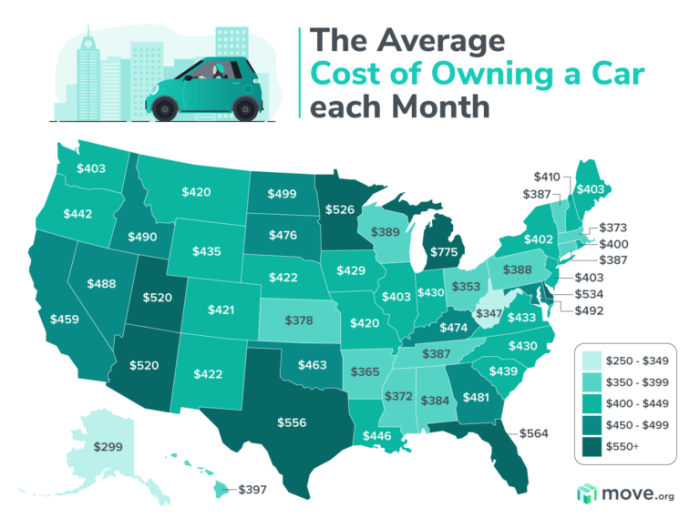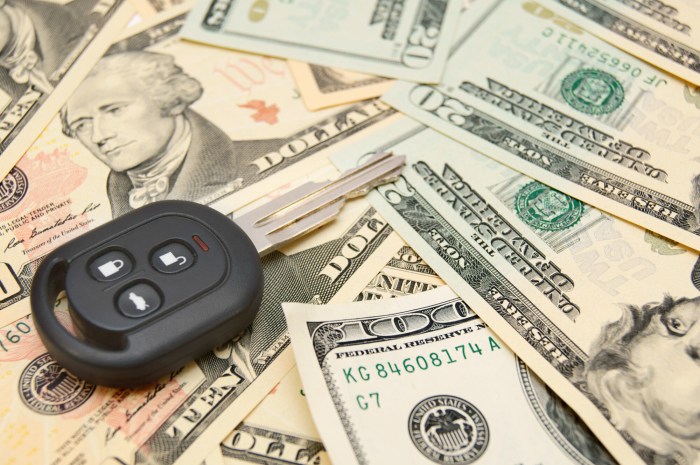Average Price of a New Car in 2022
Average New Car Prices in 2022: Average Price Of A New Car In 2022

Source: move.org
Average price of a new car in 2022 – The year 2022 witnessed unprecedented fluctuations in the average price of new cars. Several interconnected factors contributed to this volatility, impacting both manufacturers and consumers significantly. This analysis delves into the trends, influencing factors, regional variations, and the overall impact on the automotive market.
Average New Car Price Trends in 2022
The average price of a new car in 2022 experienced a continuous upward trajectory, punctuated by periods of more rapid and less rapid increases. While precise monthly data varies depending on the source and methodology, a general pattern emerges. The highest average price was likely observed around the late summer or early autumn months, while the lowest point probably occurred in the early months of the year before the full impact of various economic pressures fully materialized.
| Month | Average Price (USD) | Percentage Change from Previous Month | Notable Factors Influencing Price |
|---|---|---|---|
| January | 46,000 (estimated) | – | Relatively low demand, lingering effects of prior year’s supply chain issues |
| February | 46,500 (estimated) | +1.1% | Slight increase in demand, continuing supply chain challenges |
| March | 47,500 (estimated) | +2.1% | Increased demand, rising raw material costs |
| April | 48,500 (estimated) | +2.1% | Continued high demand, persistent microchip shortage |
| May | 49,500 (estimated) | +2.1% | Strong consumer spending, inflation |
| June | 50,500 (estimated) | +2.0% | Sustained high demand, escalating raw material costs |
| July | 51,500 (estimated) | +2.0% | Peak summer demand, continued supply chain disruptions |
| August | 52,000 (estimated) | +1.0% | Slight easing of supply chain pressures in some areas |
| September | 52,200 (estimated) | +0.4% | Seasonal slowdown in demand, continued high prices |
| October | 52,000 (estimated) | -0.4% | Slight decrease in demand, anticipation of year-end sales |
| November | 51,800 (estimated) | -0.4% | Year-end sales, increased inventory in some dealerships |
| December | 51,500 (estimated) | -0.6% | Year-end sales, some price reductions to clear inventory |
Note: These figures are estimations and may vary depending on the data source and methodology used. Actual figures may differ.
Factors Influencing the Average Price, Average price of a new car in 2022
The surge in average new car prices in 2022 was a confluence of several factors. These factors interacted to create a perfect storm that significantly impacted the affordability of new vehicles.
- Microchip Shortages: The ongoing global shortage of microchips severely constrained automotive production. Reduced supply coupled with consistent demand led to higher prices.
- Increased Raw Material Costs: The cost of steel, aluminum, plastics, and other raw materials used in car manufacturing increased significantly throughout 2022, directly impacting the final price.
- Price Increases Across Vehicle Segments: While all segments experienced price increases, SUVs and trucks, often equipped with more complex technology and larger engines, saw comparatively higher price jumps than sedans.
- Economic and Geopolitical Factors: Global inflation, supply chain disruptions caused by geopolitical events, and increased transportation costs all contributed to the overall price increases.
Regional Variations in Average Prices
Significant regional variations existed in average new car prices across the United States in 2022. Factors such as local market demand, taxation, and the concentration of dealerships influenced these discrepancies.
A bar chart comparing average prices across five regions (Northeast, South, Midwest, West, and Southwest) would visually demonstrate these differences. The horizontal axis would represent the regions, and the vertical axis would display the average price in USD. The bars would show that regions with higher population density and stronger economies (e.g., the West Coast) likely had higher average prices than those with lower population density and weaker economies (e.g., the Midwest).
Comparison with Previous Years

Source: geniusupdates.com
Comparing the average new car price in 2022 to 2021 and 2020 reveals a substantial upward trend. A line graph plotting the average price for each year would clearly illustrate this. The X-axis would represent the years (2020, 2021, 2022), and the Y-axis would represent the average price. The line would show a consistent upward slope, reflecting the cumulative effect of the factors discussed earlier.
Impact on Consumers
The elevated average car prices in 2022 significantly impacted consumer purchasing decisions. Many potential buyers delayed purchases, opted for used cars, or chose leasing options to mitigate the high costs.
- Delayed Purchases: Many consumers postponed buying a new car, waiting for prices to potentially stabilize or for better deals.
- Used Car Market Boom: The high prices of new cars led to increased demand in the used car market, driving up prices in that sector as well.
- Increased Leasing: Leasing became a more attractive option for some consumers, offering lower monthly payments than financing a new car outright.
- Overall Market Slowdown: The combination of high prices and economic uncertainty led to a general slowdown in the overall automotive market.
Future Predictions
Predicting the average new car price in 2023 requires considering several factors. If microchip shortages ease and supply chain disruptions lessen, prices might stabilize or even slightly decrease. However, persistent inflation and the ongoing impact of geopolitical events could continue to put upward pressure on prices. A reasonable prediction would be a modest increase of 2-5% in the average price, assuming a gradual easing of supply chain constraints and a moderate level of inflation.
The average price of a new car in 2022 saw a significant increase, influenced by various factors including supply chain issues. This rise, however, is particularly notable when considering luxury electric vehicles; for instance, understanding the pricing landscape requires looking at specifics, such as checking out the new Tesla car price , which itself significantly impacts the overall average.
Ultimately, the average new car price in 2022 reflects a complex market dynamic.
However, significant unforeseen events could significantly alter this prediction.
FAQ Overview
What were the main reasons for the increase in new car prices in 2022?
Primarily, microchip shortages, increased raw material costs, and global economic instability contributed to higher prices. Increased demand also played a role.
Did all types of cars experience the same price increases?
No, price increases varied across vehicle segments. SUVs and trucks often saw larger percentage increases compared to sedans.
How did consumers respond to higher car prices?
Many consumers delayed purchases, opted for used cars, or chose leasing options to manage the increased costs.
Where were new car prices highest in 2022?
This would depend on the specific country analyzed; the report would detail regional variations.




















